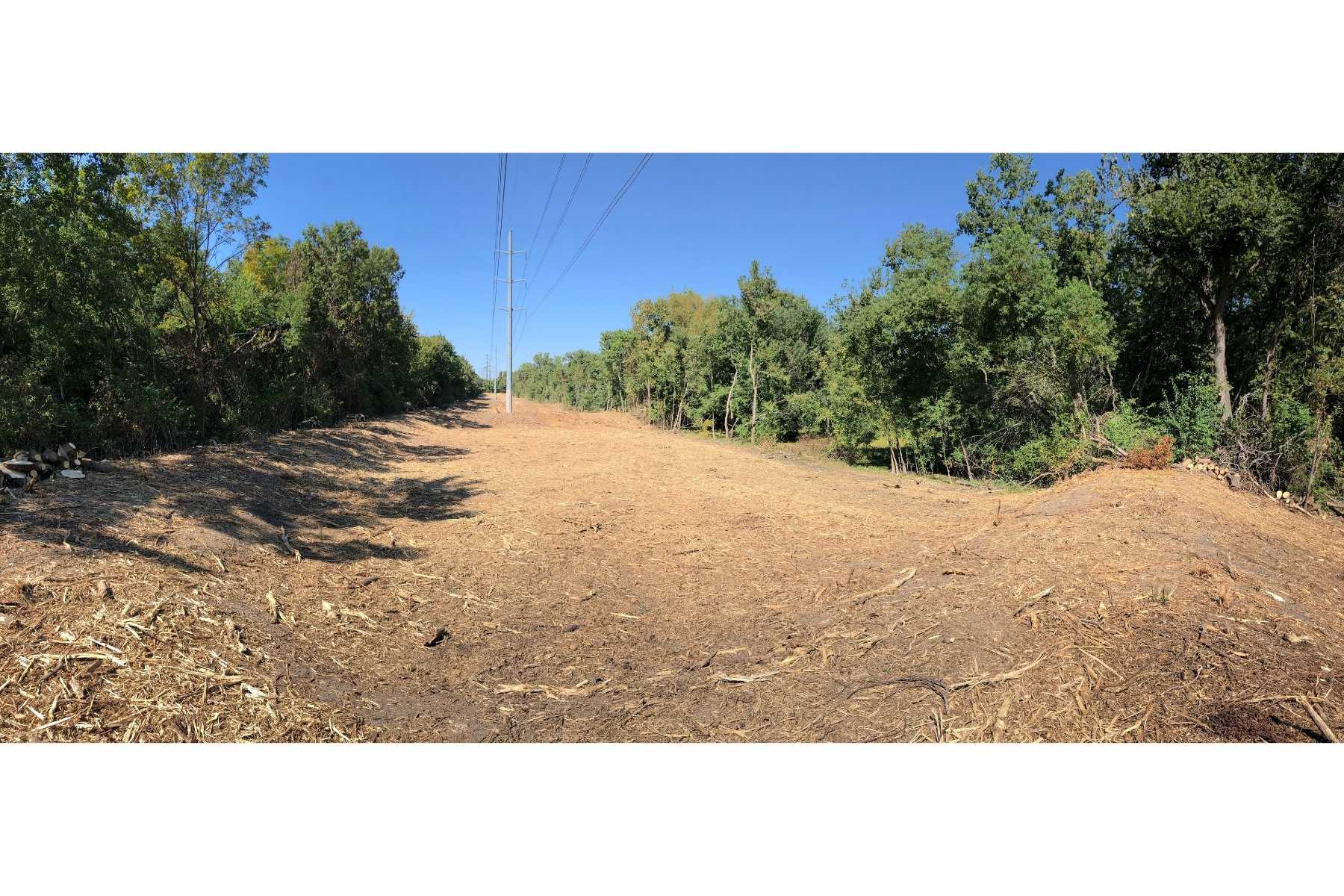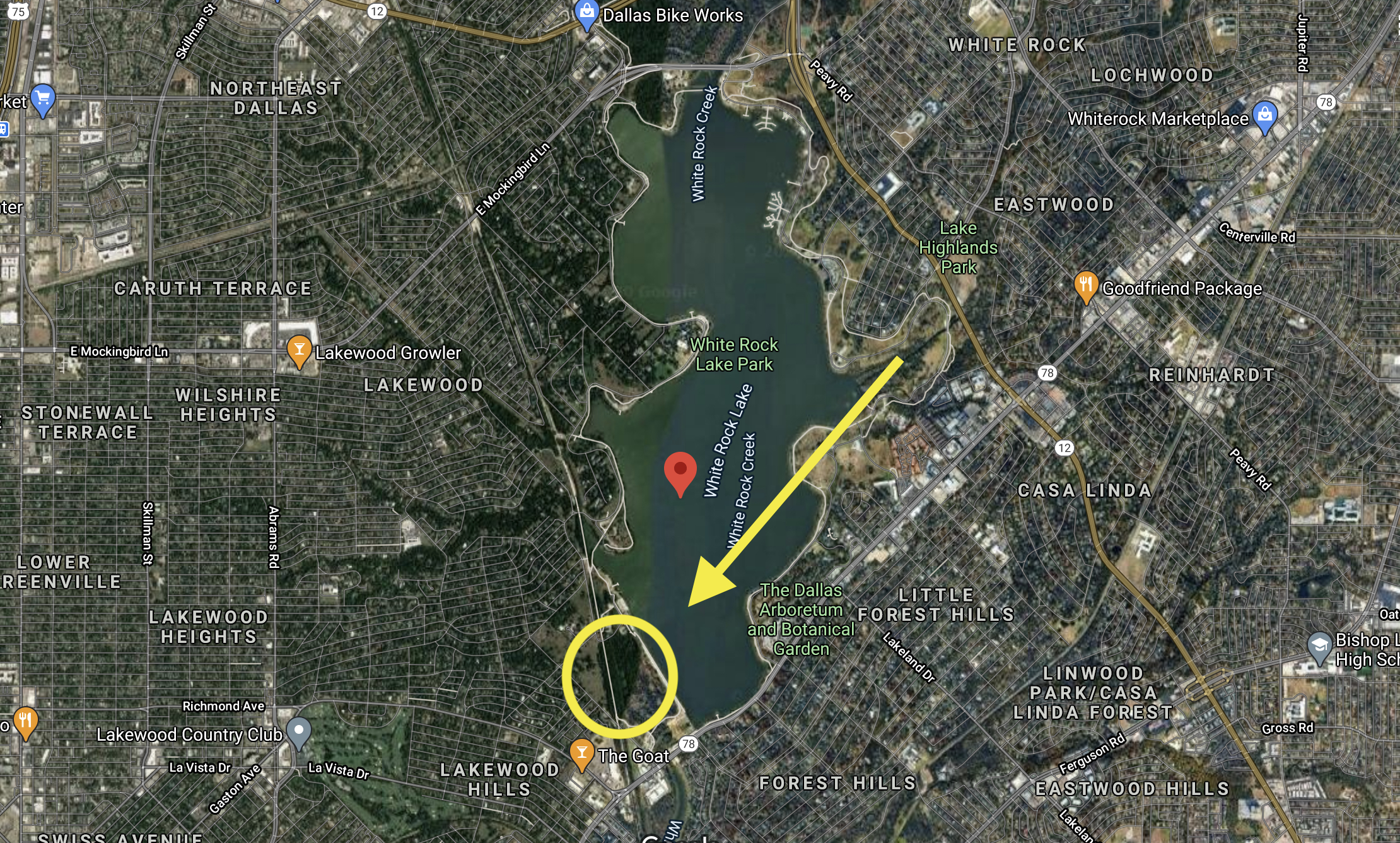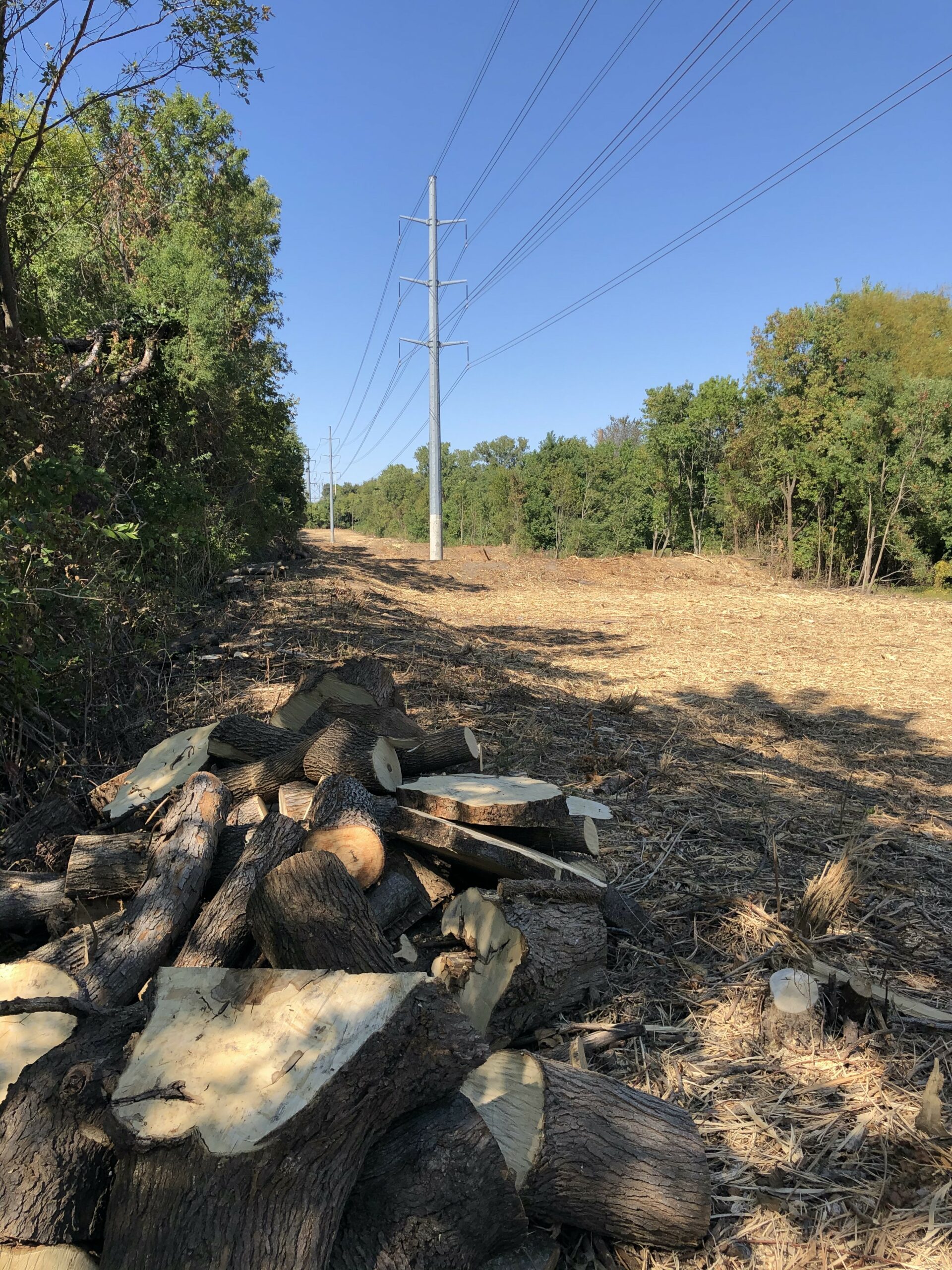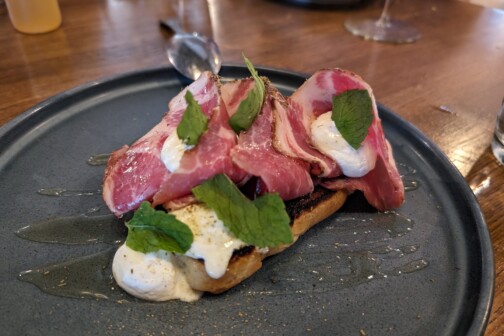Yesterday my email blew up with messages from folks who were concerned about some clear-cutting that Oncor had done at the south end of White Rock Lake, in a forested spot known as the Old Fish Hatchery Nature Area. The 50-acre corner of White Rock Lake Park lies on the Texas Discovery Loop and is described by Texas Parks and Wildlife thusly:
“A canopy of oak, elm, cottonwood and pecan trees provides habitat for warblers, titmice, chickadees, vireos, wrens, woodpeckers and sparrows. Habitat consists of moist woodland with low-lying areas and ponds, a small prairie remnant, a beaver pond and the remains of hatchery ponds. Understory vegetation consisting of greenbrier, American beautyberry, eastern redbud and red mulberry provide wildlife cover. Year-round resident birds include Red-shouldered Hawk, Barred Owl, Belted Kingfisher, Wood Duck, Warbling Vireo, Eastern Phoebe and Yellow-crowned and Black-crowned Night-Herons. The site also supports a naturalized colony of introduced Monk Parakeets. Beaver, gray fox, bobcat and coyote have also been observed here.”
Good luck to all those animals, because Oncor came through with some heavy machinery and turned about 15 percent of the area into mulch. I cycled over there yesterday afternoon to have a look. From the hike and bike trail, you can’t see the destruction. But near where the White Rock Trail hooks up with the Santa Fe, if you push through a gate with a “No Poaching” sign and walk a bit on a footpath through the woods, you’ll come to the right of way where Oncor’s power lines run above what used to be hatchery ponds, a wetland area that was until recently filled with all sorts of flora and fauna. About 7 acres of it is now gone, the whole thing reduced to a barren landscape of mulch.
Dallas nature lovers know the name Ben Sandifer. He’s a Master Naturalist and a reluctant watchdog who likes to hike through the Trinity Forest and other green areas, where he often stumbles onto environmental messes created by various city of Dallas departments and their contractors. I asked Ben for his assessment of Oncor’s work and what that land once looked like. Here’s what he wrote:
“It was the background to many Audubon Dallas bird walks where the right of way provided the backdrop to a foreground full of interesting avian species. … Each little wetland pond was its own special diorama of sorts, with a character different from the next one.
“The right of way area did have quite a few trees but was mostly a mosaic of emergent wetland, trees, and grasses. It was lush with sedges, rushes, duck potato, and smartweeds — plants that might reach knee high, if that, during growing season and never a threat to the secure and safe transmission of electrons to Oncor customers. That’s kind of the fundamental problem with the clearing here. To see that special place — gone — now in such a fundamental, overt act of extirpation is distressing. Grubbed and mulched with a machine and then given a once-over with herbicide for good measure. The work ensures that nature will be long in coming back and gaining a foothold here. … Likely what will happen is the area will become a thick patch of giant ragweed.”
There was some question whether this land was federally protected and permits might have been needed to do the work. Also, I wondered whether Oncor plans to do any remediation in the area. I put those questions to Kerri Dunn, a spokeswoman for Oncor. Here’s what she wrote back:
“Maintaining vegetation along and below Oncor powerlines and equipment is vital to our role of ensuring safe and reliable electric service for our customers. Oncor is also committed to being a good steward of the environment and strives to balance the need for vegetation management with the need to preserve the many natural resources across our service territory.
“This area is Oncor-owned property, and the recent maintenance activities were specifically focused on vegetation which may pose a threat to the safety and reliability of electric service. The majority of work was focused on clearing overgrown brush, already downed trees, and invasive vegetative species. Very few mature trees were removed through this process, and an approximately 30-foot barrier on the north and south side of the transmission ROW was left untouched. Furthermore, minimal ground pressure equipment was used to minimize disruption of the surrounding soil and mulching was completed to support erosion control. Permits were not needed for this project.
“Our transmission and vegetation management teams also worked closely with our environmental department to confirm that the area of trimming was neither a protected wetland nor the home of any threatened/endangered species. Additionally, work was scheduled at a time of year that would be the least disruptive to native species. … Oncor recognizes the value in collaborating with local organizations such as local Audubon chapters as part of our continued environmental stewardship and we’re committed to continuing to do so.”
That last part got me, the part about being committed to collaborating with local Audubon chapters.
Before I explain why, you need a quick lesson about electricity and the transmission thereof: Oncor is an electric utility that transmits the juice. It is owned by Sempra Energy. But it was once owned by Energy Future Holdings, which is now Vistra Energy, before EFH filed for bankruptcy. Not all that long ago, Oncor and TXU were the same company. TXU is a retail juice provider. It is owned by Vistra. Got that?
There is a sign posted at the entrance to the 7 acres of right of way that Oncor turned to mulch. It reads: “This right of way is part of the Old Fish Hatchery Nature Area and is maintained by TXU Electric and Dallas County Audubon to protect wildlife habitat and to provide the public with opportunities to enjoy and study nature.”
Now it is a great area for the public to enjoy and study mulch.
Do you know why that sign is there? It’s there because this same land was clear-cut by TXU 20 years ago. The nature lovers went nuts. The local Audubon chapter got involved. It was a big story in town. From an April 23, 2000, report in the Dallas Morning News:
A 100-foot-wide swath of fallen trees through one of the city’s most treasured wildlife areas turned Earth Day into a nightmare for some area environmentalists Saturday.
Members of the Environmental Center of Dallas and the county’s Audubon Society spent Friday and Saturday surveying the fallen trees near the Old Fish Hatchery, just south of White Rock Lake.
The trees — 100 to 150 hackberry, live oak and Chinese tallow on 2 1/2 acres — were cut by crews working for TXU Electric to make room for power lines. TXU spokesman Chris Schein said that the utility company “made a mistake in the final execution and we take responsibility for it.”
The cutting has angered the environmental groups that had been negotiating with TXU to protect the area.
“There were piles of dead trees everywhere, stumps and cut trees all over the place,” said Kelly Cotten, president of the Environmental Center of Dallas. “It’s massive destruction. It will take 10 to 15 years before we see any regeneration at all.”
I got ahold of Kelly Cotton and asked him about his efforts 20 years ago to preserve that neck of our woods and what happened. Here’s what he wrote to me:
“Audubon was the lead negotiator with TXU regarding the clear-cutting of the right of way through the Old Fish Hatchery Nature Area. It was a particularly egregious double-cross on the part of TXU. Both ECODallas and Audubon Dallas had been informed a few months earlier by TXU’s Environmental Services department that standard maintenance was planned for the ROW though the OFH Nature Area, and we, with advice from local Texas Parks and Wildlife Department urban biologists, had been negotiating a set of mutually acceptable protocols to accomplish TXU’s maintenance needs without unduly damaging the riparian ecosystem and all its associated wildlife habitat and recreational/educational value.
“The negotiations concluded successfully, and Audubon Dallas actually awarded TXU with an Environmental Stewardship Award during a public ceremony reported by the press. A few weeks later, TXU contractors clearcut the entire ROW, devastating it ecologically and recreationally. All the involved environmental groups were flabbergasted and angry. We went straight to the media, which led to massive TV and newspaper coverage (helicopters filming live overhead shots, TV crews onsite, that sort of thing). Jim Schutze’s wife, Mariana, covered some of it for the DMN.
“Negotiations between TXU, Audubon Dallas, ECODallas, and TPWD ensued. At the end of the process, TXU VPs agreed to revamp their maintenance protocols for environmentally sensitive areas across North Central Texas. Another huge ceremony was staged, documents were signed, all in the presence of heavy media coverage. In the end, I think a few TXU employees were demoted and one may have lost his job over the clear-cutting. All was well — until this month.
“Interestingly, TXU’s CEO at the time was Erle Nye. … Today, in a strange twist of fate, the CEO of Oncor — the spinoff from TXU that now maintains the transmission infrastructure — is Allen Nye, Erle’s son. Strange how things sometimes turn out.”
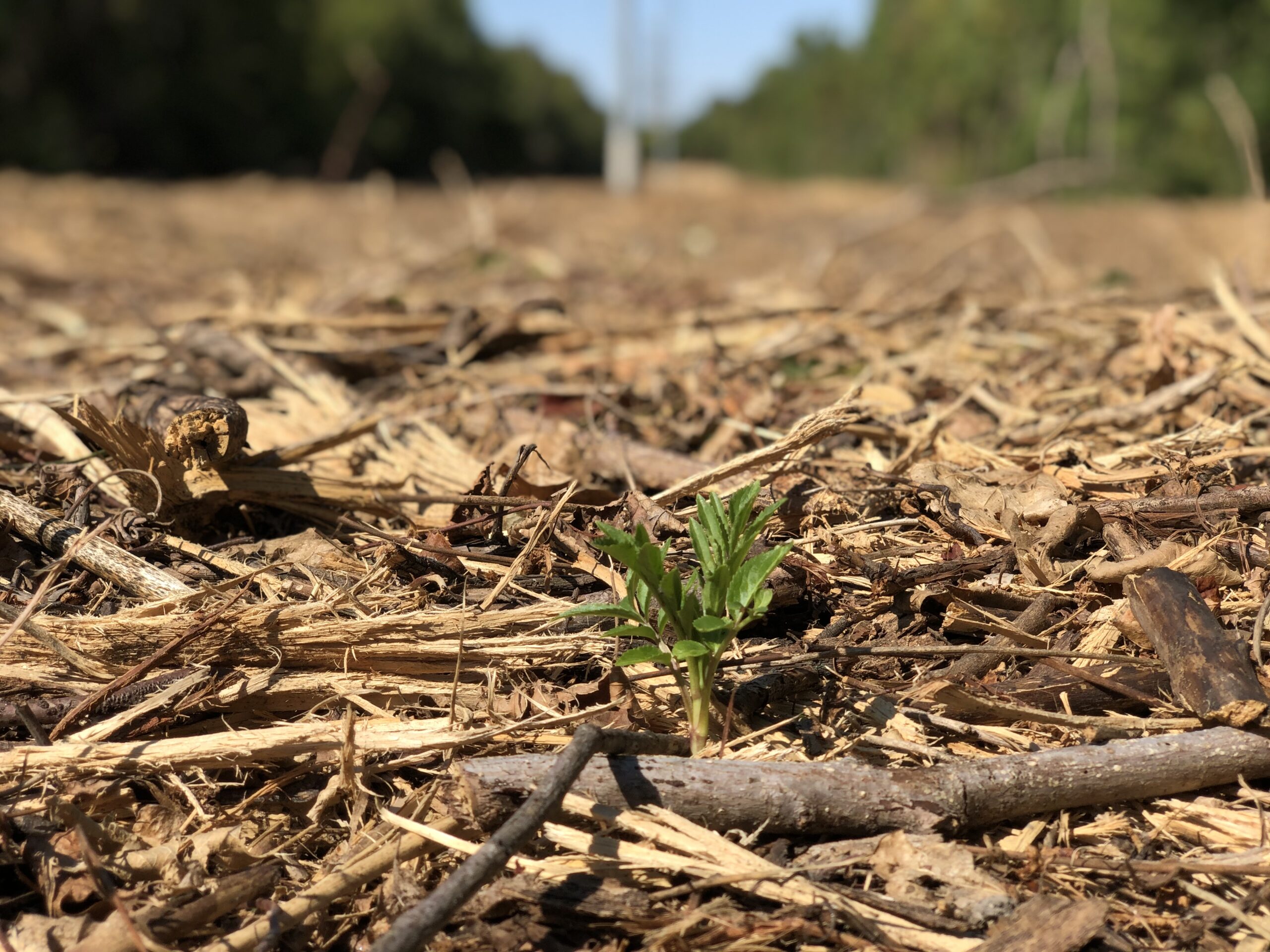 I have a confession to make: I like electricity. I use it all the time. And, living not far from the lake, I might even use the juice that flows through the power lines in question. So I understand that concessions must be made if air is going to be conditioned and Nespresso is going to be brewed. I don’t want to be the crank who complains about his electricity going out when a storm blows a tree limb into a power line and then also complains when Oncor comes to cut back those same tree limbs.
I have a confession to make: I like electricity. I use it all the time. And, living not far from the lake, I might even use the juice that flows through the power lines in question. So I understand that concessions must be made if air is going to be conditioned and Nespresso is going to be brewed. I don’t want to be the crank who complains about his electricity going out when a storm blows a tree limb into a power line and then also complains when Oncor comes to cut back those same tree limbs.
But you know what? In this case, no concession needed to be made. This clear-cutting was unnecessary. I’ll let Ben Sandifer explain how Oncor could have more responsibly done its work:
“Vegetative management in right of ways can be done in a manner that can create self-sustaining and healthy ecosystems that won’t interfere with power transmission or safety. Permanent habitat anchored by strong native populations of desired species can keep taller and undesired vegetation out of the right of way here. At the same time, those species can compliment and provide habitat for animals and aesthetically pleasing sights for humans. That’s largely what was in the right of way prior to clearing.
“Rather than spend the time to selectively clear nuisance flora, a decision was made to wipe out everything and turn their back on their responsibilities as a member of the community and friendly neighbor. This was a dirty and cheap hatchet job done with the least amount of care possible in the shortest amount of time possible. Cutting corners like this means that nature is the one who draws the short straw. We as Dallasites are the ones who have to live with the results.”
One last thing, if I may. Remember Earle Nye, the guy who ran TXU when the company pulled a fast one 20 years ago? The son who bears his name — Allen Earle Nye Jr., CEO of Oncor — lives 6 miles from the Old Fish Hatchery. A little closer, just about a mile from the Old Fish Hatchery, you’ll find Lakehill Preparatory School, where Earle Nye still serves on the advisory board. His wife, Alice, served as a substitute teacher for many years at the school. Together they donated money to help the school build something that is, from all accounts, a special place for the students. About 2 miles south of the Old Fish Hatchery, at a Lakehill satellite campus, is the 40-acre Alice and Erle Nye Family Environmental Science Center.
Here’s hoping the kids are learning a lesson.


